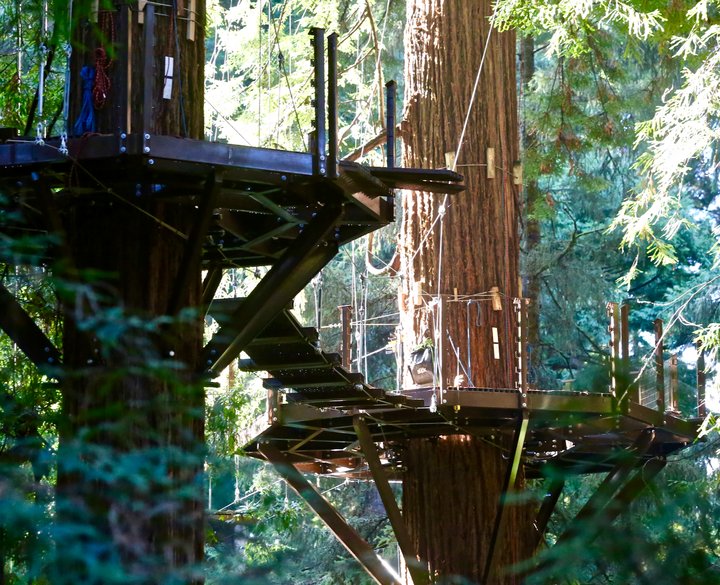
A portion of the Sequoia Park Zoo’s Redwood Sky Walk | Photos: Andrew Goff
If you caught LoCO’s Thursday night post sharing a photo of an adorable, fluffy, baby flamingo, then you know that we stopped by the Zoo this week. But the real purpose of our visit was to provide our readers with a look inside the highly anticipated and nearly complete Redwood Sky Walk. (But the flamingo chick was a nice bonus and if you haven’t looked at it yet, do that now. Then come back and read about the Sky Walk.)
Interim Eureka City Manager Miles Slattery was kind enough to invite the Outpost to tag along on a Thursday morning tour of the Sky Walk to get a closer look at the progress that has been made and experience the thrill of exploring the redwood canopy from a dizzying 100 feet above the forest floor.
OK, so the tour only took the Outpost more like 30 feet above the forest floor — the height reached by the initial “launch deck.” The more adventurous portions of the walkway, which will be up to 100 feet high, are not yet ready for the public to walk on. But the construction crew is hard at work, doing its damnedest to finish by the end of the year.
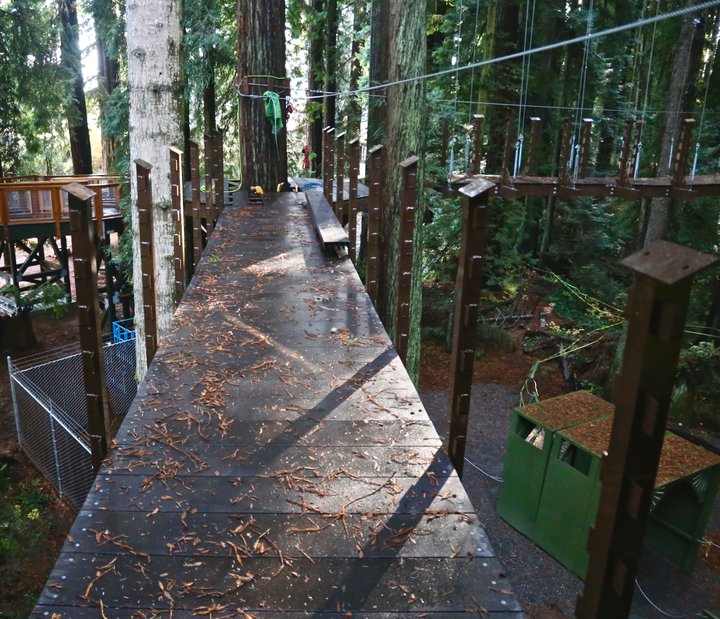
View off of the launch deck
Construction has been a team effort between Oregon-based company Synergo, which has been in charge of the aerial portions of the walkway, and local company Greenway Partners, which is in charge of construction of the entrance ramps and launch deck and oversight of the full project.
“It’s totally custom, totally unique,” Matt Grosjean, vice president of construction for Greenway told the Outpost, as he guided the group through the work site. “Who knows? Maybe we’ll do another one someday. But it’s certainly been a one-of-a-kind [project] for me so far.”
Once complete, the Sky Walk will be roughly a quarter of mile in length and consist of a series of platforms and bridges installed on and around Sequoia Park’s massive trees. The 100-foot-high portion is a catenary-style bridge swinging over the park’s ravine, a part of the “adventure leg.” The walk also includes a more stable, ADA-accessible leg.
The project is a part of Phase II of the Zoo Master Plan, which will also include the installation of a Native Predators Exhibit that will hold bears and coyotes. Construction on the exhibit is expected to begin early next year, Slattery said, and will allow people to see the animals from above as they enter the walkway.
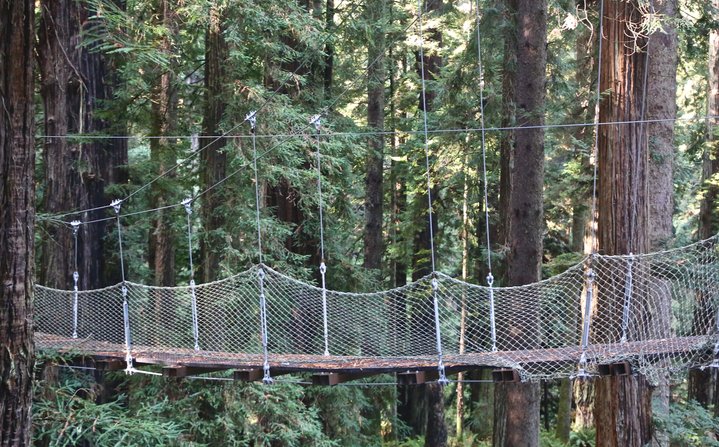
One of the Sky Walk’s catenary (swinging) bridges
The zoo also has plans to install a Redwood Interpretive Center at the base of the Sky Walk and will begin seeking grant funding next year to move forward with that project, Slattery said. Interpretive signs will also be installed throughout the walkway, to provide visitors with an educational experience.
When asked about how this project will affect the health of the trees, Grosjean and Slattery said that the impact is minimal, with a very small number of trees being cut or delimbed for safety purposes. Slattery said that most of those trees were hollowed out to be kept as animal habitats. Grosjean added that years of extensive studies were done with arborists, ecologists and biologists to determine how to maintain the best health of the redwoods.
“The point of the project is to have this redwood experience,” Grosjean said. “So anything that would be detrimental to the health of the redwoods would be counterproductive to the mission of the job.”

One of the highest platforms, part of the “adventure leg”
Grosjean and Slattery wanted to acknowledge the many individuals and groups that helped make this project possible. In addition to the engineers, crew, Zoo and city staff, the project would not have been possible without the generous support of the Eureka, Arcata and Humboldt Lodging Alliances, which together contributed a whopping $2.3 million toward the Sky Walk.
Gary Stone of the Humboldt Lodging Alliance, who was also on the tour, reminded the Outpost that the Sky Walk was not initially planned to be as high and that the Alliance was responsible for the conception of the more adventurous design, which includes the 100-foot-high swinging bridge.
When asked if he was happy with the project and whether he felt the money was being put to good use, Stone chuckled a little and, placing his hand on this reporter’s shoulder in the middle of a pandemic, suggested that was a conversation better had over “a bottle of wine.”
As far as the timeline for officially opening the Sky Walk, Slattery said that is still up in the air (no pun intended), but the construction is expected to be finished by the end of December, with the initial opening taking place sometime in January.
A group of 100 people who were selected in a raffle will be the first visitors admitted (not at the same time), followed by Sequoia Park Zoo members. The invitation will then be extended to all local residents and eventually an official grand opening can take place and the attraction can be open to tourists. Increasing tourism was, after all, one of the reasons the lodging alliances agreed to kick in over $2 million for the project.
Of course, there are several factors that will affect the timeline, like the pandemic and the weather, Slattery said. He also wanted to mention that some oblivious individuals have been walking through the construction site in Sequoia Park, also causing delays and the city had to hire volunteers to man the perimeter of the site.
“Please respect the signage and the volunteers asking you not to go there,” Slattery asked of the public. “It’s a part of your own safety and we’re trying to protect people from anything falling.”
Scroll down for more photos from the tour.
###
PREVIOUSLY:
- Sequoia Park Zoo Officially Launches ‘Redwood Canopy Walk,’ Which is Expected to Open in 2020; Local Tourism Orgs Kick in $1.7 Million for Construction
- Now With a ‘More Adventurous’ Design, Sequoia Park Zoo’s ‘Redwood Canopy Walk’ Project is One Step Closer To Reality
- It Looks Like the Sequoia Park Zoo Is Gonna Try Again With the Bears
- Construction of Sequoia Park Zoo’s ‘Redwood Canopy Walk’ Will Start Next Month; Project Should be Complete by September
- (PHOTOS) Get Pumped for the Freshly Named ‘Redwood Sky Walk’
- REDWOOD SKY WALK UPDATE: Construction Underway for the Hanging Walkway of Eureka’s Dreams
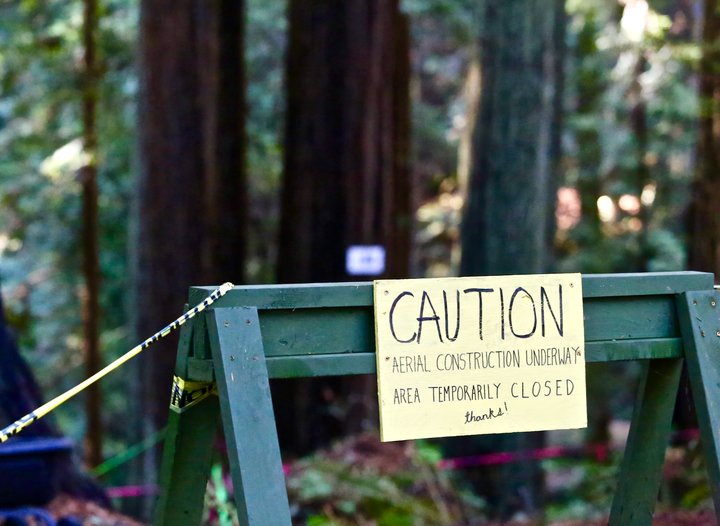
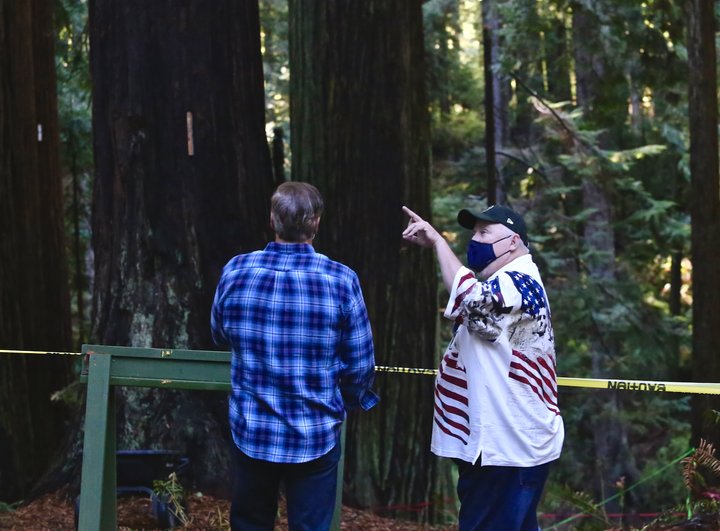
Gary Stone (right) and Chris Ambrosini of the Humboldt Lodging Alliance admire their investment
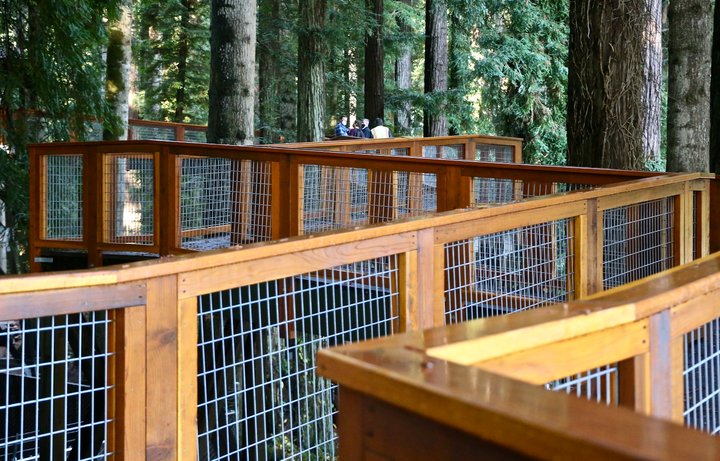
The entrance walkway leading to the launch deck

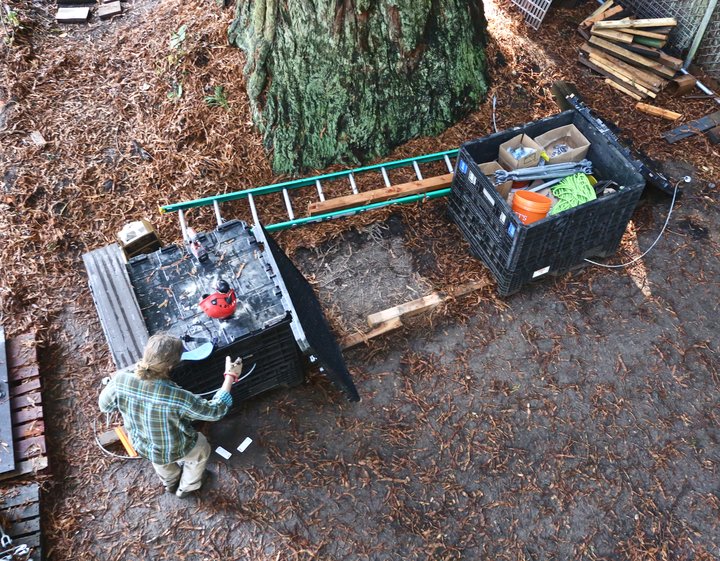

Interim City Manager Miles Slattery (right) and Chris Ambrosini


CLICK TO MANAGE